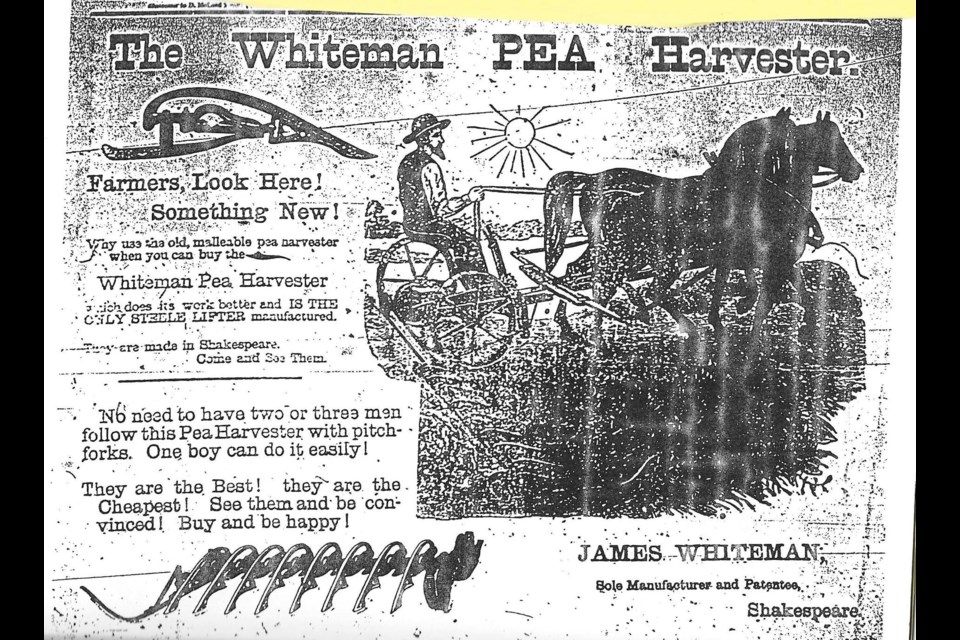This story was previously posted on Stratford Today.
Growing up on a farm in the summer was far from the idyllic scenes often portrayed in literature or popular media. For me, labouring under the scorching sun. My days were filled with the tasks of stooking, working in the haymow, or enduring the oppressive heat of the granary. Although I did enjoy the food that this bounty fed. I recall vividly one summer when my father, engaged in the dusty, heat-laden work of threshing, emerged from the granary in a manner that could have rivaled the most energetic breakdancers at the Olympics. A rat had scurried up his pant leg, and his impromptu dance was a sight to behold.
Those summers were characterized by more than just physical exertion; they were marked by the prickles on our ankles and arms, the constant sweat streaming down our faces, and being dirty from working in the fields. Yet, despite these challenging conditions, there were moments of reprieve that made the demanding work bearable. One such solace was the sand filled Shakespeare Pond and conservation area, a newly created oasis of cool, clear water. After a long day of labour, nothing felt better than plunging into its refreshing depths. The pond was a testament to the ingenuity of creating beauty and relaxation amid a landscape dominated by toil.
Today, the rural landscape has transformed dramatically. The same roads we once used to navigate our farm equipment are now frequented by colossal harvesting machines. These behemoths, which seem out of place on the roads surveyed and built over 200 years ago, are vastly different from the simple tools of the past. If the early settlers of Perth County, who arrived in the early 1800s, could witness the modern machinery used today, they would undoubtedly be astonished. The evolution of farming technology has been a journey of innovation and improvement, driven by the relentless quest to increase efficiency and productivity.
One of the key figures in this evolution was Mr. James Whiteman of North Easthope Township. James Whiteman was a farmer who lived in the Amulree area and had a factory in Shakespeare where he built his new farm machinery, The Whiteman Pea Harvester. In June 1898, the Tavistock Gazette featured an advertisement for the Whiteman PEA Harvester, proudly proclaimed as ‘something new’. This machine represented a significant leap forward in agricultural technology. Prior to its invention, harvesting peas required the labour of several men. With the advent of Whiteman’s harvester, this task could now be accomplished with just ‘one boy and the machine’. This innovation not only reduced labour costs but also increased the speed and efficiency of harvesting, reflecting the broader trend of mechanization in agriculture. An advertisement in a Seaforth, Ontario newspaper listed several reasons for this machine as being the best in the world.
Whiteman’s contributions to farming technology extended beyond the pea harvester. His factory in Shakespeare was a hub of invention, where he built and refined various pieces of farm machinery. Whiteman held multiple patents, including those for the pea harvester and carriage carrier angle irons. His inventions were a testament to the ingenuity and resourcefulness of early 20th-century farmers who sought to improve their work conditions and productivity.
The Farmer's Almanac of 1898 would have provided valuable guidance for farmers, offering advice on planting and harvesting times based on lunar cycles and weather patterns. This almanac was an essential tool for maximizing crop yields, reflecting the deep connection between agricultural practices and natural rhythms. Furthermore, the census records from the 1800s offered detailed documentation of crop yields, providing a decade-by-decade snapshot of agricultural productivity. These records were crucial for understanding land use and improving farming techniques over time.
As we reflect on the advancements in agricultural technology, it is clear that the journey from manual labour to mechanized efficiency has been marked by remarkable innovations. The shift from using simple hand tools and basic machinery to operating sophisticated harvesting equipment underscores the broader technological progress that has transformed farming. Today’s colossal machines, which dominate rural roads, are the culmination of over a century of incremental improvements and inventive breakthroughs.
In conclusion, the contrast between the arduous labour of my childhood summers and the modern farming landscape illustrates the profound changes that have occurred in agriculture. From the sweat and dirt of manual labour to the sleek, efficient machinery of today, farming has evolved in ways that were once unimaginable. The legacy of pioneers like James Whiteman, along with the broader trends in agricultural technology, has reshaped the farming experience, making it more efficient and less labor-intensive. As we navigate the rural roads behind these modern harvesting machines, we are reminded of the incredible journey of innovation that has transformed the way we farm and the landscape we work in.


